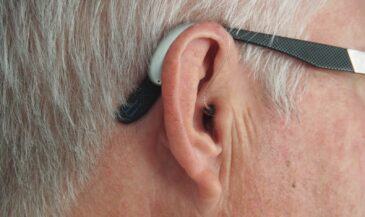By Dr. Christopher Kent
This month’s column is by Dr. Galen Politis
NOTE: For the first time in the history of this column, I have decided to share the work of a guest columnist, Dr. Galen Politis of Massachusetts. His comments regarding the Council on Chiropractic Guidelines and Practice Parameters (CCGPP) “Best Practices” project deserve your thoughtful consideration. Christopher Kent, DC, JD
To engage in the process of line by line criticism of a document that is as fundamentally flawed as this one is to give it credibility it does not deserve and by doing so we present a clear danger to our profession. You may ask, “Why is this document fundamentally flawed?” It is fundamentally flawed in several ways.
First, it assumes that the best and nearly the only way to define “best practice” is to look solely at information published in peer reviewed journals, and just those peerreviewed journals that a small group of DCs have decided are worthy of their notice. This approach signals a willingness to ignore knowledge and practice in all health care that has not shown up in this narrowly defined venue. This amounts to at least 85% of everything that is used in all the healing professions to help people.
Second, it assumes that the only really legitimate way to know things is by the “scientific” method. There are certainly other valid and legitimate ways of knowing things. I’m sure all of you have put your hands on someone and “known” that something is wrong. Or, perhaps you have just seen someone and known the same thing. Intuition is a valid way of knowing things. Perhaps these experiences of knowing should be classed under the heading of direct revelation. Either way, both are valid and neither is scientific. They are also a vital part of our practices.
Third, it cavalierly dismisses the fact that ours is primarily an empirically derived profession. By that I mean that it has been built step by step over the years by the methods of observation and trial and success. To pretend otherwise is to dismiss the great and painstaking work of Gonstead, De Jarnette, Palmer, Homewood, Logan, Grostic, Pierce, Blair or the ongoing work of Fuhr, Brown, Harrison and Epstein among many others as being irrelevant to our profession. This is a travesty.
Fourth, it ignores any use of xray other than for the purpose of medical diagnosis. More than half of the profession utilizes some form of Gonstead, a system that is based on xray analysis. CBP uses xray as do a host of upper cervical approaches. In my opinion, some of the best work in our profession comes from some of these practitioners. This document essentially relegates the doctors and their techniques to the category of irrelevance.
Fifth, it ignores the scientific validity of several technologies utilized by our profession. Thermography and SEMG are two. It is not that there has been no published work on these technologies, it is just that this work has been selectively ignored. What causes this bias?
The attempt to narrowly define best practice by using only information in certain peerreviewed journals is not a rational one, and if accepted by the profession would put it in a box that none of us would find tolerable. The thinking that led to this approach, if used 500 years ago would have left us all on a flat earth. If used in modern times, we would not have quantum mechanics. There is use and validity in being outside the “proven” box. Best practices often are.
I find myself asking why such an attempt is being made at all. A clue comes from the fact that the document was put together primarily by people who have publicly stated that there is no scientific validity to the concept of “subluxation” as used by our profession, and that they believe the profession should eliminate it. Not investigate it, eliminate it. This flies in the face of the Northern Ohio University study that found that 90% of the profession wants to retain and investigate the concept of subluxation. These same “published research is the only way to define the profession” people have countenanced the largest funded “chiropractic” research project to date being on the effect of garlic on a specific antibiotic (at NUHS). Are these people to be trusted with our profession’s future?
It appears that there is a political agenda behind this attempt to define “best practice” and it is not one that is to our benefit or the benefit of the people we serve. It looks like that agenda is one of putting chiropractic in a very small and welldefined box (the treatment of musculoskeletal disorders) in exchange for apparent legitimacy and acceptance by a portion of the scientific and medical and third party pay community. This is not my agenda, and I hope that it is not yours.
I am not saying science isn’t useful or valid. Far from it. Science is at its core investigation in the quest for knowledge and truth. I am saying that this bastardized use of science for an apparently political agenda cannot be tolerated.






























































































































































